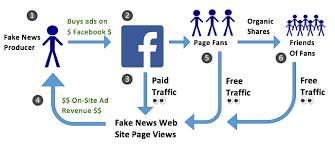
presented |

without |

comment |

? |
NETWORKED LIFE
Networked and Social Systems Engineering (NETS) 112
Fall 2018
Tuesdays and Thursdays 10:30-12, Berger Auditorium, Skirkanich Hall
Prof. Michael Kearns
Jump to the course schedule.
COURSE DESCRIPTION
Networked Life
looks at how our world is connected -- socially, strategically
and technologically -- and why it matters.
The answers to the questions above are related. They have been the subject of a fascinating intersection of disciplines, including computer science, physics, psychology, sociology, mathematics, economics. law and finance. Researchers from these areas all strive to quantify and explain the growing complexity and connectivity of the world around us, and they have begun to develop a rich new science along the way.
Networked Life will explore recent scientific efforts to explain social, economic and technological structures -- and the way these structures interact -- on many different scales, from the behavior of individuals or small groups to that of complex networks such as the Internet and the global economy.
This course covers computer science topics and other material that is mathematical, but all material will be presented in a way that is accessible to an educated audience with or without a strong technical background. The course is open to all majors and all levels, and is taught accordingly. There will be ample opportunities for those of a quantitative bent to dig deeper into the topics we examine. The majority of the course is grounded in scientific and mathematical findings of the past two decades or less (often much less).
Fall 2018 is the fifteenth offering of
Networked Life.
You can get a detailed sense for the course by visiting the extensive course web pages from past years:
[Fall 2017]
[Fall 2016]
[Fall 2015]
[Fall 2014]
[Fall 2013]
[Fall 2012]
[Spring 2010]
[Spring 2009]
[Spring 2008]
[Spring 2007]
[Spring 2006]
[Spring 2005]
[Spring 2004]
There was also a greatly condensed version of this class offered to the general public as part of the online education platform Coursera. While the Coursera version is not being offered online this semester, we will make the corresponding videos available throughout the Penn offering, and they are all gathered here.
Networked Life is the flagship course for Penn Engineering's Networked and Social Systems Engineering (NETS) program. Throughout the course we will foreshadow material that is covered in greater depth in later NETS program courses, but NETS 112 is entirely self-contained.
TEXTS AND READINGS
At least parts of the following five books will be required reading:
The links above are to the Amazon sites for the books, where they are available in inexpensive paperback and e-book formats. The paperback versions will also be available at the Penn bookstore.
In addition to readings from these texts, there will be frequent articles from the recent scientific and popular literature that will be provided directly on this web page at the appropriate points in the syllabus.
COURSE PERSONNEL
Prof. Michael Kearns, Course Instructor
mkearns@cis.upenn.edu
Levine Hall 509
Office hours: Tuesdays 12-1 PM (right after lecture), or by appointment
Adel Boyarsky,
Teaching Assistant
adelb@seas.upenn.edu
Office hours: 9AM-11AM on Fridays in Levine fifth floor bump space (GRW).
Chris Jung,
Teaching Assistant
chrisjung.sy@gmail.com
Office hours: 12:00-1:30PM on Mondays in 3401 Walnut Active Learning Room.
Karthik Tadepalli,
Teaching Assistant
karthikt@sas.upenn.edu
Office hours: Thursday 12-1:30PM in Levine 5th floor bump space (GRW).
LECTURE LOCATIONS AND TIMES
Attendance at the main lectures is considered mandatory for all enrolled students. They are held Tuesdays and Thursdays 10:30-12 in Berger Auditorium of Skirkanich Hall. There are no recitations for the course.
COURSE PREREQUISITES
Networked Life has no formal prerequisites, and is meant to be accessible to a broad range of students across SEAS, the College, and Wharton. No computer programming background is required, but students should be comfortable using computers and the Web, and accessing resources on the Internet.
The course is open to all majors and all levels.
CURRICULUM REQUIREMENTS FULFILLED BY NETS 112
Please check with your academic advisor in these programs to confirm exactly how you can count the course.
COURSE FORMAT AND REQUIREMENTS
The main lectures for Networked Life will be in fairly traditional format, including class participation, discussion, and communal in-class experiments. PDF slides for all lectures will be provided, usually at least slightly in advance of the lecture itself.
There will be two or three homework assignments. These will include simple quantitative exercises, as well as essay questions, computer and web exercises. Collaboration on the homeworks is not permitted.
There will be a midterm, and a final exam. We may have a quiz or two as well.
It is anticipated that the homeworks/quizzes, midterm and final will each count for approximately a third of the overall grade.
Students are encouraged to bring articles, demos, web pages, news events, etc. that are relevant to course topics to the attention of Prof. Kearns. Extra credit will be given if the suggested material is used in the course (see the "Fourth Column" below).
Except for occasional hard-copy handouts distributed in lectures, all of the material for the course will be posted in the table below. Lecture slides, reading and homework assignments, in-class and out-of-class experiments, due dates, exam information, etc. will all be provided below. The materials posted are initially those from the last offering of the class, and will be gradually updated and possibly altered as we progress through the course. New materials and topics may be added as well. Reading and working ahead are encouraged, just be aware that things may change a bit as we proceed. It is every student's responsibility to monitor this schedule closely and regularly.
In the assigned readings below, "Watts", "Schelling", "Schneier", "O'Neil" and "Kearns/Roth" refer to the five required texts cited above. Other readings will be directly provided as links to PDF documents. Unless specified otherwise, you should generally try to complete the assigned reading during roughly the period spanned by the dates given in the same row of the table.
The lecture slides are all in PDF format, but they may often contain links to documents in other formats, including Postscript, JPEG, video, etc. In order to view all of the linked content you may need to be using a computer with viewers installed for these formats. Note that since slides are revised shortly in advance of each lecture date, links to future decks may not yet be active.
In the "DATES" column of the table below, our current place in the schedule will be highlighted in red.
"THE FOURTH COLUMN" will be used to put links to class-related materials from the popular media, the web, etc. Extra credit will be provided to those who send me such material if it is used.
| DATES | SLIDES | ASSIGNMENTS AND ANNOUNCEMENTS | THE FOURTH COLUMN |
|---|---|---|---|
|
Lectures: Tue Aug 28 |
Course Introduction and Overview [PDF] [PPT] (Rev. 8/28) |
Here is the Coursera course overview video. Here is a document containing a brief background survey and our second communal social experiment. Please print them out, complete them (which should only take a few minutes), and return them at the start of the second lecture (Thu Aug 30), as we will analyze the results of the social experiment on the fly in class.
|
As sample Fourth Column material, an updated Kubrik classic.
|
|
Lectures: Thu Aug 30 Tue Sep 4 Thu Sep 6 |
Structural Properties of Networks: Introduction [PDF] [PPT] (Rev. 9/6) |
Please read this lightweight introduction to some course concepts via a network analysis of squash matches. Link to the Erdos Number Project website. Here are two Coursera videos that are related to this set of lectures: |
First-to-Field-Agent honors go to Sherina Wijaya for a double contribution: graph theory for cooperation, and social network analysis of "Game of Thrones". The latter inspired me to find a network visualization of my own favorite show, "Breaking Bad". |
|
Lectures: Thu Sep 6 Tue Sep 11 Thu Sep 13 |
Contagion in Networks [PDF] [PPT] (Rev. 9/3) |
The following three assigned papers will be discussed in lecture. At a minimum
you should know what the main results are, but try to understand as much as you can.
The Structural Virality of Online Diffusion. Goel, Anderson, Hofman, Watts. Structural Diversity in Social Contagion. Ugander, Backstrom, Marlow, Kleinberg. Here is a link where you can download NetLogo, a very nice app with many scientific simulations and models. Throughout the term we'll be examining several of the simulations under the Networks section, including this one, which we'll play around in class with. Here is a Coursera video related to this topic:
|
From Field Agent Vivian Dai on the topic of virality, Ellen versus Nugget Boy. Not sure I would call this "organic" contagion, but hey who can argue with 3 million retweets? From Field Agent Gaby Coetzee, Bitcoin networks and Metcalfe's Law. From Field Agent Daksh Chhokram, the selfish (and angry) meme.
|
|
Lectures: Tue Sep 18 Thu Sep 20 |
Machine Learning and Social Networks
(no slides) |
Can Cascades be Predicted? Cheng, Adamic, Dow, Kleinberg, Leskovec. Romantic Partnerships and the Dispersion of Social Ties: A Network Analysis of Relationship Status on Facebook. Backstrom and Kleinberg. Private Traits and Attributes are Predictable from Digital Records of Human Behavior. Kosinski, Stillwell, Graepel. |
For those of you interested in machine learning and AI, you might want to check out this lecture by Yann Lecun, one of the pioneers of neural networks and deep learning, on "Could Machines Be More Like Humans?". It's on September 19 at 4PM.
|
|
Lectures: Tue Sep 25 Thu Sep 27 Tue Oct 2 |
Navigation in Networks
[PDF] [PPT] (Rev. 9/25) |
During this set of lectures, we will discuss the following five articles. An Experimental Study of the Small World Problem, by J. Travers and S. Milgram. An Experimental Study of Search in Global Social Networks, by P. Dodds, R. Muhamad, and D. Watts. Navigation in a Small World, Kleinberg. Identity and Search in Social Networks, Watts, Dodds, Newman. The Scaling Laws of Human Travel, Brockmann, Hufnagel, Geisel. There are two Coursera videos associated with this lecture: Navigation in (Social) Networks Navigation in Networks, Revisited Here is Homework 1 [Word format] (Rev. 10/9; Problem 5 corrected/clarified), due at the start of class on Thursday October 11 in hard-copy form.
|
. |
|
Lectures: Thu Oct 4 |
.
|
No lecture; Fall break. |
.
|
|
Lectures: Tue Oct 9 Thu Oct 11 Tue Oct 16 |
How Do Real Networks Look? [PDF] [PPT] (Rev. 10/2) |
For these lectures, you should read Chapters 2, 3 and 4 in "Six Degrees". (I recommend simply reading the book in its entirety, but will not require it.) We will also be discussing the following paper: Four Degrees of Separation. Backstrom et al, 2012. Here are Coursera videos associated with this set of lectures: How Do Real Networks Look? I. Heavy Tails How Do Real Networks Look? II. Small Diameter How Do Real Networks Look? III. Clustering of Connectivity Remember, Homework 1 due at the start of lecture Thursday Oct 11. To help out, this week the TAs will hold extra office hours as follows: Adel: 9-10am Tuesday, Levine 5th floor bump space; Chris: 12-1pm Wednesday, 3401 walnut 4th floor common space; Karthik: 4-6pm Tuesday, Van Pelt, Weigle Information Commons 120. Here's another extra credit opportunity: attend all or part of this event and provide a brief (one page) essay on what you learned and your impressions.
|
. |
|
Lectures: Tue Oct 16 Thu Oct 18 |
Models of Network Formation
[PDF] [PPT] (Rev. 10/2) |
Coursera videos associated with these lectures; we will only discuss Erdos-Renyi and Preferential Attachment in class, but you are also responsible for the clustering models video: Models of Network Formation I. The Erdos-Renyi Model Models of Network Formation II. Clustering Models Models of Network Formation III. Preferential Attachment For those of you that would like to experiment with the NetLogo package used for some course demos, you can download it here.
|
From F.A. Jarett Schwartz, the insanely cool
Wikigalaxy.
Here's a nice one from Field Agent Peyton Walters, who appears to have
some admirable unix-hacking skillz. If you have a Mac and bring up a linux terminal/shell, and execute the
following incantation (all on one line):
|
|
Lectures: Tue Oct 23 |
MIDTERM EXAM. The midterm exam will be held during class, and will be closed book and closed note. It will cover all material to date.
|
To help you prepare for the midterm, here are past midterm examinations (some but not all with solutions) from 2017 (solutions here) , 2016, 2015, 2014, 2013, 2012, 2011, 2010, 2009, 2008, 2007, and 2006. Please remember that course content and schedule changes from year to year, so these midterms definitely cover material we have not yet, or will not, discuss this term; and conversely, there are new topics we've introduced this term that are not represented on these past midterms. |
. |
|
Lectures: Th Oct 25 Tu Oct 30 |
Incentives and Collective Behavior
[PDF] [PPT] (Rev. 10/25) |
Read Schelling, "Micromotives and Macrobehavior", Chapters 1, 3 and 4. Coursera video associated with this lecture: Towards Rational Dynamics in Networks
|
. |
|
Lectures: Tu Oct 30 Th Nov 1 |
Introduction to (Networked) Game Theory
[PDF] [PPT] (Rev. 10/30) |
Coursera videos associated with this lecture:
|
. |
|
Lectures: Tu Nov 6 Th Nov 8 |
Networked Games: Coloring, Consensus and Voting; Network Formation Games
[PDF] [PPT] (Rev. 11/1) |
Read the following article associated with these lectures: Experiments in Social Computation, Coursera videos associated with these lectures: Games on Networks: Coloring and Consensus Games on Networks: Biased Voting
|
. |
|
Lectures: Tu Nov 13 |
.
|
No class, Prof Kearns traveling. |
.
|
|
Lectures: Th Nov 15 |
Class discussion:
Algorithmic Privacy
|
Advance reading: "The Ethical Algorithm", Chapters 1 and 2. |
.
|
|
Lectures: Tu Nov 20 |
Class discussion:
Algorithmic Fairness
|
Advance reading: "The Ethical Algorithm", Chapter 3. |
.
|
|
Lectures: Th Nov 22 |
.
|
No class, Thanksgiving break. |
.
|
|
Lectures: Tu Nov 27 |
Class discussion:
Algorithmic Game Theory
|
Advance reading: "The Ethical Algorithm", Chapter 4. |
.
|
|
Lectures: Th Nov 29 |
Class discussion: P-hacking and the Reproducibility Crisis |
Advance reading: "The Ethical Algorithm", Chapter 5. |
.
|
|
Lectures: Tu Dec 4 |
Class discussion: AI, Morality, and the Singularity |
Advance reading: "The Ethical Algorithm", Chapter 6 and Concluding Thoughts. Here is Homework 2 (also in Word format), due at the final exam on December 17 at 9AM. |
.
|
|
Mon Dec 17 |
.
|
FINAL EXAM, MONDAY DECEMBER 17, 9-11AM, ROOM CHEM 102. Here are solutions and grading guidelines for the midterm. There will be a review session for the final exam on Friday December 14 from 1:30 to 3:30 in the Active Learning Classroom on the fourth floor of 3401 Walnut. To get there, enter the elevator lobby to the left of the Starbucks at 34th and Walnut, go to the fourth floor, left out of the elevator and left again down the hall. Rather than summarizing all course material chronologically, I will let it be driven by people's questions, so come prepared with yours. Here are some past final exams, some with solutions, to help you study. Please note that some of the questions are on topics we did not cover this year, and that we covered topics this year that are not represented on the exams. [2004] [2005] [2006] [2007] [2008] [2009] [2011] [2012] [2013] [2014] [2015] [2016] [2016]
|
.
|